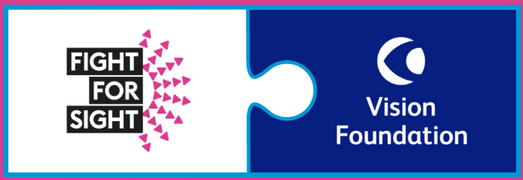It’s World Sight Day!
This year’s theme aims to highlight the importance of eye care in the workplace. To mark WSD, organisations all over the world are urging employers to make eye health initiatives standard practise and to promote good eye health habits that will improve the well-being, safety, and productivity of millions of employees.
Prioritising your own eye health is the first step, followed by motivating the world’s employers to provide quality eye care to their employees. The end goal is a workforce that ensures eye care is available, accessible, and affordable to all.
1) A high percentage of sight loss is preventable
Many people have preventable or treatable blindness, with some reports putting the percentage at over 80%. Globally, at least 1 billion have a condition that could have been prevented or has yet to be treated, according to Time to Focus, a report commissioned by Fight for Sight.
It’s estimated that more than a million people in the UK are living with avoidable sight loss.
Find out more in the Time to Focus report.
2) Your eyes are a window to other health conditions
Oculomics is the association of ophthalmic biomarkers with systemic health and disease. Put simply, it means that by looking at your eyes, it’s possible to determine your risk of other diseases, including Parkinson’s Disease, Alzheimer’s disease, specific psychiatric disorders (including schizophrenia, depression, bipolar disorder), cardiovascular disease, certain respiratory diseases and more. For example, recent research we helped fund indicates eye scans could identify certain neurological disorders, including Alzheimer’s, up to seven years before symptoms start to show!
It’s why our Director of Social Impact, Ellie, ensures she still has regular eye tests.
3) Sight loss doesn’t only affect older people
It’s true some of the most prevalent sight loss conditions are linked with older age, including age-related macular degeneration and glaucoma. However, young people are also impacted by sight loss. For example, Stargardt macular dystrophy (or Stargardt disease) is a genetic eye condition that causes progressive central sight loss. It affects a person’s detailed and colour vision; the condition is estimated to affect between one in 8,000 to 10,000 people in the UK.
Read more about the research we’re funding into Stargardt Disease
4) Eye tests can spot signs of myopia (short-sightedness)
Myopia, or short-sightedness, is becoming more common around one in three people have myopia. If undiagnosed in children, it may impact their learning. Regular eye tests can identify signs of myopia. Thanks to funding from Fight for Sight, it may also be possible to conduct genetic screening for myopia. Short-sightedness can range from mild, where treatment may not be required, to severe, where a person’s vision is significantly affected. Treatments include corrective lenses (such as glasses or contact lenses), laser eye surgery to alter the shape of the eye and artificial lens implants.
This video features our Research Grants Assessment Panel (RGAP) member, Alastair Denniston:
5) Get support from your employer
It’s crucial that workers – especially those who work with computer screens – receive regular eye tests, and some industries might also require you wear PPE to protect your eyes whilst working. Check out the following resources to ensure your workspace is working for you!
- ‘Love your eyes’ workplace checklist (PDF) (for employees)
- ‘Love your eyes’ workplace checklist (PDF) (for employers)
- The five-minute workspace check (PDF)
- Six ways to reduce eye strain (PDF)
- Eight things you need to know about your eyes (PDF)
- HSE guidance on PPE for eyes (Webpage)
- Practical support for employers (Vision Foundation employer toolkit)
These resources were kindly produced by IAPB to mark World Sight Day. Find more resources on their website.
Working-age people diagnosed with an eye condition may require reasonable workplace adjustments, including funding from the Access to Work scheme. We shared a webinar session on navigating Access to Work in 2022. To catch up on the session and download the resources, visit the event webpage here.
In a recent episode of our podcast, Nasser Siabi explores the ways assistive technology can transform the workplace for blind and partially sighted people.
6) Prevent falls and accidents
Maintaining good eye health can prevent falls and accidents, especially in older people. The recent Access to Care report published by Specsavers and the AOP found that:
- There is a direct link between poor eye health and falls (one of the commonest causes of hospitalisation for people over 65),
- Three-quarters of severe falls that result in hospital admission through A&E are directly attributable to sight loss,
- Falls cost the UK £4.4 billion each year,
- Absent or incorrect spectacles (such as an out-of-date prescription) is one of the top three causes of falls among people in residential care.
What does World Sight Day mean to you?
The theme of WSD 2023 focuses on the importance of eye care in the workplace, but how are you marking this year’s event? We’d love to hear what activities you have planned. If you’re happy to share, send us an email at hello@visionfoundation.org.uk

